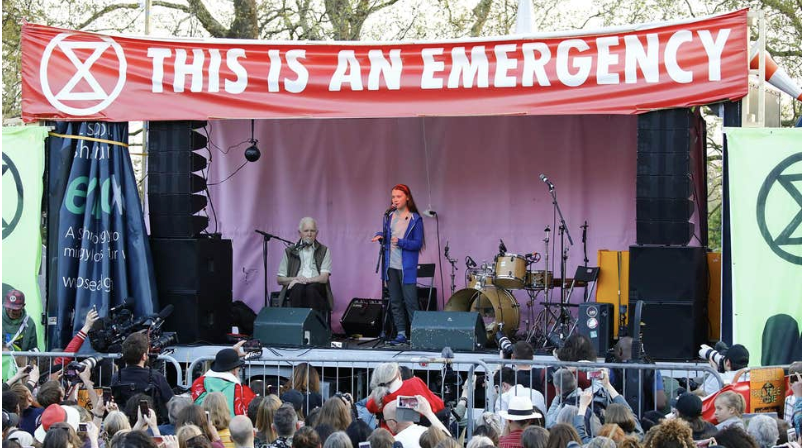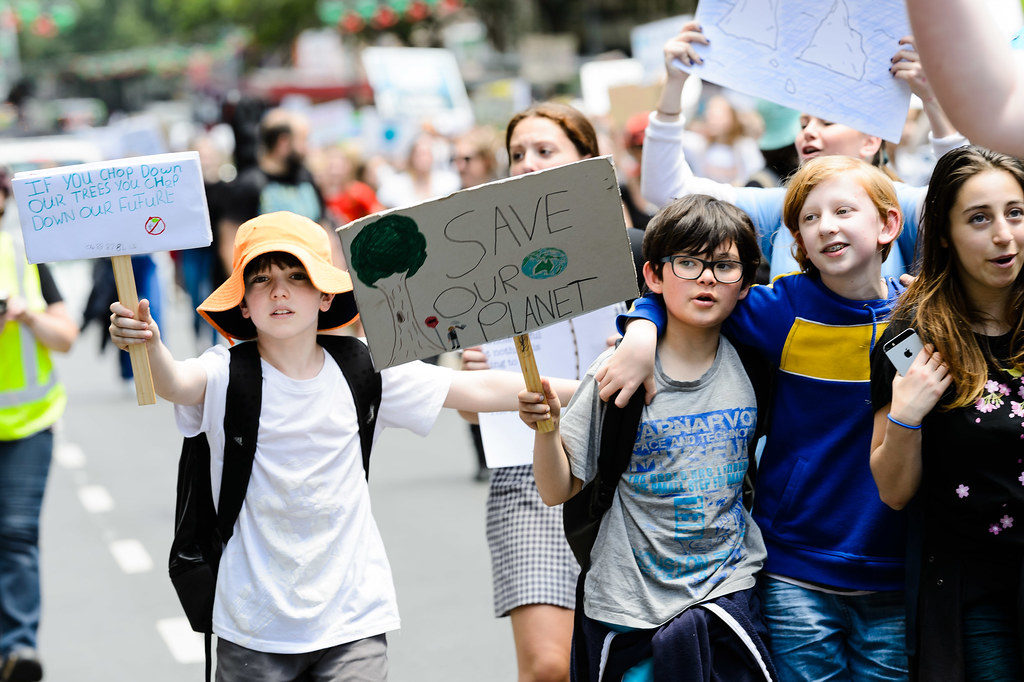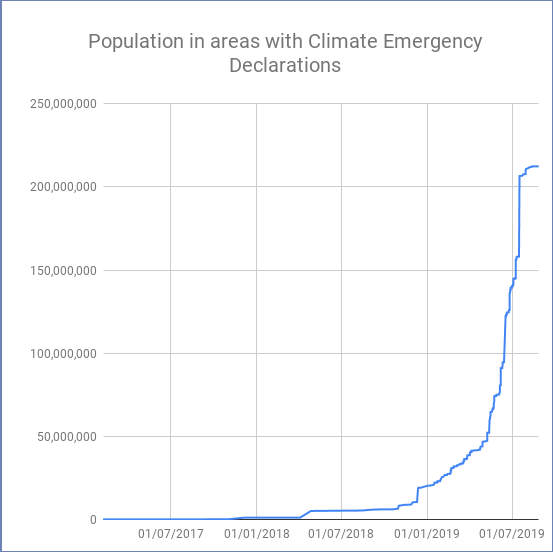Minds of the Movement
An ICNC blog on the people and power of civil resistance
by Elizabeth A. WilsonSeptember 17, 2019
Climate change is arguably the most important issue confronting humanity today, presenting an existential threat that may imperil the very existence of life itself. Global and national governance structures have failed to address this threat, so children and youth are stepping up to demand action against greenhouse gas emissions.
As youth climate activists and their allies are gearing up for global actions on September 20th and 27th, timed around the UN Climate Summit on September 23rd, it is important to look at what this relatively new nonviolent movement has already achieved.
Catalyzed in large measure by the 16-year old Swedish schoolgirl, Greta Thunberg, who undertook a solitary Skolstrejk för Climatet [school strike for climate] in front of the Swedish Parliament building in August 2018, a global movement emerged in less than half a year.
Small-scale local strikes followed in other countries: Australia, Germany. Then, in March of this year, mass global school strikes (#FridaysforFuture) were organized that by some estimates took place in 120 countries and involved 1.6 million students. In a letter to The Guardian, the global organizing committee for the strike declared:
We the young, have started to move. We are going to change the fate of humanity, whether you like it or not. United we will rise until we see climate justice. We demand the world’s decision-makers take responsibility and solve this crisis.

Source: Greta Thunberg Twitter account
A second wave of student strikes in May attracted even more participants from 125 countries. More and bigger school—and general—strikes are planned for the upcoming actions.
This blogpost focuses on one of the school climate strikers’ key demands—declarations of climate emergency. As the Guardian letter stated, “We finally need to treat the climate crisis as a crisis,” so student climate strikers have sought to get local and national authorities to pass climate emergency declarations.
We are in a Climate Emergency!
Climate emergency declarations as a tactic gradually emerged from the work of earlier activists. In books like Plan B, Climate Code Red, The One Degree War Plan, and Al Gore’s film An Inconvenient Truth, the need to recognize climate change as an emergency on the scale of a world war was initially put forward. Margaret Klein Salamon, who founded the NGO, The Climate Mobilization, in 2014, and is its founder and executive director, used her training as a psychologist to argue against the notion—pushed by mainstream environmental activists—that climate activism should not be too alarmist, so as not to trigger “fight or flight” reactions or depressed passivity (“apocalypse fatigue”). What was needed was a change of mindset.
Drawing on psychological research, Salamon formed the idea of “emergency mode,” defining it as “the mode of human psychological functioning that occurs when individuals or groups respond optimally to existential or moral emergencies.” Emergency mode “is characterized by an extreme focus of attention and resources on working productively to solve the emergency.” Reasoning that such a change of mindset is necessary in order to respond to climate change, The Climate Mobilization declared its mission to initiate a “WWII-scale climate mobilization.”

by Julian Meehan is licensed under CC BY 2.0
Climate Emergency Declarations Begin to Take Off
Spurred by a group of organizers, the City of Darebin in Victoria, Australia, may have been the first municipality in the world to declare a climate emergency. Montgomery County, in the state of Maryland, USA, also passed a declaration in late 2017. But the campaign to persuade governments to declare climate emergencies was not going much of anywhere until the youth movement began to coalesce in late 2018.
Greta Thunberg picked up the rhetoric of emergency—and the analogy to World War II—at a TEDx event in November 2018 in Stockholm and again when she addressed the Conference of the Parties to the UN Framework Convention on Climate Change (COP24) in Katowice, Poland, in December, in videoed events that went viral.
TEDx
I remember thinking that it was very strange that humans who are an animal species among others could be capable of changing the Earth's climate. Because if we were and if it was really happening we wouldn't be talking about anything else. As soon as you turn on the TV everything would be about that. Headlines, radio, newspapers, you would never read or hear about anything else. As if there was a world war going on.
COP24
For 25 years countless of people have stood in front of the United Nations climate conferences, asking our nations’ leaders to stop the emissions. But, clearly this has not worked since the emissions just continue to rise.
So I will not ask them anything.
Instead I will ask the media to start treating the crisis as a crisis.
After demonstrations around COP24 in December 2018, adoptions of climate emergency declarations accelerated. On January 15th, the Hayward, CA, City Council adopted a climate emergency declaration. January 17th, Vancouver, CA. January 29th, the Aberystwyth Town Council. Larger entities began to follow suit.
In mid-April 2019, the grassroots, direct action group Extinction Rebellion closed down parts of London to call attention to climate change. On April 23rd, Greta Thunberg addressed the UK Parliament, warning of the consequences of inaction:
Around the year 2030, 10 years 252 days and 10 hours away from now, we will be in a position where we set off an irreversible chain reaction beyond human control, that will most likely lead to the end of our civilisation as we know it.
As a result of this pressure, Scotland declared a climate emergency on April 29, 2019. This represented a turn-around from earlier in the month when members of the ruling Scottish National Party voted against a climate emergency declaration proposed by Scotland’s Green party. First Minister Nicola Sturgeon said, “A few weeks ago I met some of the young climate change campaigners who’ve gone on strike from school to raise awareness of their cause. They want governments around the world to declare a climate emergency. They say that’s what the science tells us, and they are right.”
On May 1st, a week after Thunberg addressed the UK Parliament, lawmakers declared a climate emergency and called for a target of net zero carbon emissions by the year 2050. On May 9th, Ireland’s government also declared a climate emergency. On June 26th, New York City, which has a population of over 8.6 million, declared a climate emergency. The Climate Mobilization now estimates that over 221 million people are represented by governmental entities that have declared a climate emergency.

Source: https://www.theclimatemobilization.org/climate-emergency-campaign
In advance of the upcoming UN Climate Summit, even the Pope declared, “We have caused a climate emergency that gravely threatens nature and life itself, including our own” and called on world leaders to show the “political will to take drastic measures” necessary to achieve net-zero carbon emissions.
Impacts of Climate Emergency Declarations
The true impacts of these climate emergency declarations will only be seen as time plays out. In a speech before the French National Assembly in July, Thunberg warned that “only setting up these vague, distant dates and saying things which give the impression that things are being done and that action is on the way, will most likely do more harm than good.”
While some emergency declarations have led to action plans, some do seem largely symbolic. Still, reframing the issue as an emergency is a strategic first step in galvanizing power of ordinary citizens around the world to pressure their governments to take action.

Elizabeth A. Wilson
Elizabeth A. Wilson is the author of People Power and International Human Rights: Creating a Legal Framework (International Center on Nonviolent Conflict, 2017). She is a human rights lawyer, currently visiting scholar at Rutgers Law School-Newark and formerly Assistant Professor of English at Yale University.
Read More